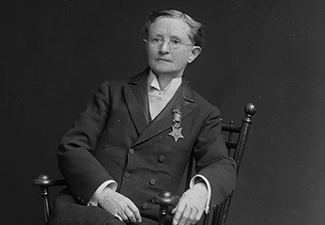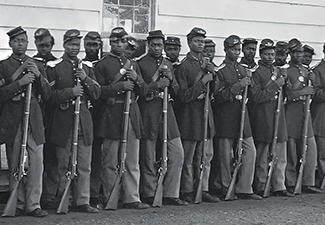The “Six Triple Eight” Proved That No Role Was Too Small During World War II
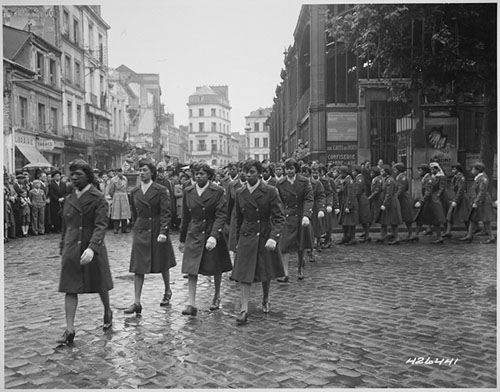
| Table of Contents |
| Signed. Sealed. Undelivered. |
| ‘No Mail, Low Morale’ – A Battle Cry |
| The Infamous Encounter |
| Getting Their Due |
| The Battle Back Home |
| Honors and Recognition |
The historic Six Triple Eight – also known as the U.S. Army’s 6888th Central Postal Directory Battalion – is the largest group of Black servicewomen to serve overseas during World War II. These remarkable women shattered barriers and played a pivotal role in ensuring that mail reached our American troops. Read more to learn about their contributions.
Signed. Sealed. Undelivered.
Birmingham, England, 1945. It was the thick of WWII, and an entire planet was on edge from the uncertainty of the future.
Back home, civilians were riddled with worry and anxiety over losing their brave service members. They poured their concern and love into millions of letters, notes, gifts, and photographs.
Warehouses and hangars in Birmingham transformed into makeshift orphanages to hold the stacks of unopened mail and forgotten mementos that had yet to find their rightful homes.
The march of Allied forces across Europe didn’t help. Ever-shifting locations for mail delivery meant staggering delays in troops receiving mail. One general estimated a dismal six-month processing time for the backlog.
Who would take on what was labeled a “personnel problem?”
‘No Mail, Low Morale’ – A Battle Cry
The psychological impact of not receiving mail was inevitable. There was low morale among soldiers.
But the Army’s personnel shortages in the postal division were not new. Despite multiple requisitions to secure additional, qualified workers, the chaos of the mail system lingered.
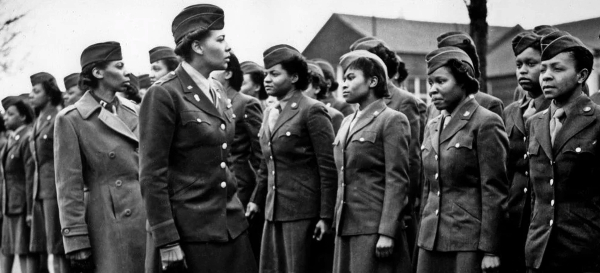
The creation of the Women’s Army Corps (WAC) was timely for reasons not foreseen at its inception in 1943. The WAC was born out of the Women’s Army Auxiliary Corps, which had been created a year before but lacked official military status.
The acceptance of Black women as enlisted personnel in the WAC was possible thanks to the efforts of Dr. Mary McLeod Bethune and the support of First Lady Eleanor Roosevelt. Unfortunately, the rest of the Army did not keep pace with this progress. Black servicewomen watched their white counterparts get approved to serve overseas. In response, civil rights groups pressed the War Department to extend the same opportunity to Black WAC members.
The War Department finally relented in November 1944. Volunteers trickled in slowly, with an exceptional group emerging—an all-Black WAC battalion of 31 officers and 824 enlisted personnel. Their designation? The “Six Triple Eight,” officially known as the 6888th Central Postal Directory Battalion.
The 6888th battalion, consisting of Companies A, B, C, and D, had its own headquarters. Lt. Col. Charity Edna Adams, a major at the time, commanded the battalion.
These women were battle-ready, despite being tasked with support duties. They trained to crawl under logs, jump over trenches, march with rucksacks, and know the difference between an American Winchester M12 shotgun and a German Karabiner 98b rifle.
Lisa Crutch, WWP warrior narrates the story of the Six Triple Eight.
In February 1945, the battalion’s first contingent set sail on the Ile de France (the second contingent would not arrive for another two months). Stealthy German U-boats littered the vast ocean. Upon arrival in Scotland, the contingent was greeted with the explosion of a German V-1 rocket, forcing them to run for cover.
After a dangerous voyage, the contingent went to Birmingham, England. What awaited them might have sent others running – frigid, barely lit warehouses housing forgotten packages and letters stacked taller than monuments. Rats opened packages with now-rotten sweets.
The Six Triple Eight got to work in the dead of winter, alternating grueling eight-hour shifts to guarantee nonstop progress on the backlog. Draped in coats and long johns, the women’s first achievement was developing a tracking system for service members, which resolved the issue of soldiers sharing the same name.
That was 7 million information cards to maintain.
Other tasks included redirecting undeliverable mail and packages, investigating wrongly addressed mail, and perhaps the most tragic task – handling mail addressed to the fallen.
Birmingham residents were so fascinated with the women of the Six Triple Eight that it was common for them to drop into the warehouses to watch the battalion work. These visits formed bonds with the local community. Locals even invited the women to tea in their homes.
Unfortunately, their own military was not as welcoming. Segregation and second-class treatment were still a reality for the Six Triple Eight. The separation of the cafeteria, recreational facilities, and living quarters by ethnicity and gender showcased evident privilege. Maj. Adams led a boycott to address the disparities. In the meantime, the Six Triple Eight maintained its own facilities, including a hair salon, cafeteria, and recreational area.
The Infamous Encounter
Despite exemplary work on a job no one wanted, the group still received criticism from inspectors about job performance. Racist attitudes likely influenced dissatisfaction with the 6888th’s output.
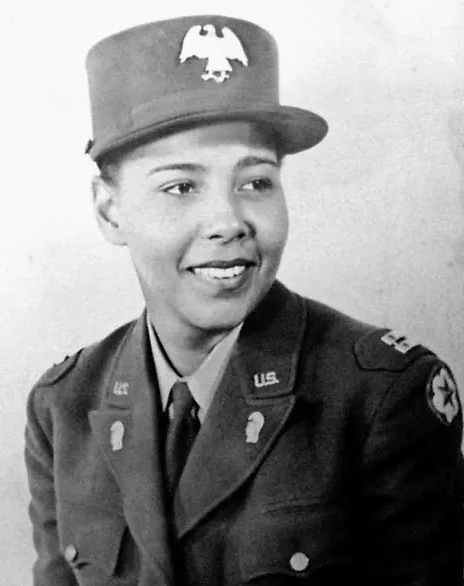
During one infamous encounter, Maj. Adams stopped a male general from inspecting the quarters’ private rooms as some women slept. All other personnel were, as instructed, in formation for inspection. The general berated Maj. Adams for the absence of some of the troops. She attempted to clarify that her personnel had a good reason for not being there: They were working one of the three shifts that ensured the 24-hour processing of mail.
The outraged general interrupted her, threatening to send a white superior officer to show her how to do the job she had already been capable of doing.
"Maj. Adams never broke protocol when the words, 'Over my dead body, sir' sprang from her mouth like the searing rounds of a Browning pistol."
The chaplain assigned to the battalion, after the incident, interrupted operations. The women of the Six Triple Eight were required to report to him for counseling, which caused absence without leave for several unit members. Additionally, male soldiers banded together when Black and white servicemen showed resentment and disdain toward these women’s valuable presence.
The Six Triple Eight bloomed anyway. Their innovative tracking system allowed them to process an average of 65,000 pieces of mail per shift.
The six-month backlog that initially seemed like their very own version of Dunkirk? Gone in three months.
The women of the 6888th always prioritized the soldiers' well-being; “no mail, low morale” became their war cry. Providing and sustaining a connection between soldiers and their families was as vital to victory as an ammunition surplus.
Getting Their Due
For at least a short while, the Six Triple Eight enjoyed a golden period of appreciation.
Their skill and efficiency were called upon in Rouen, France. This time, they were faced with a three-year-old mail backlog. They successfully processed and cleared it in three months.
The women attracted so much acclaim that the European theater’s deputy commander, Lt. Gen. John C.H. Lee, delayed his train so the Six Triple Eight could travel in the first-class car he attached to the train.
It seemed inevitable that some tragedy would eventually meet the unit.
In early July 1945, a jeep accident claimed the lives of Pfc. Mary J. Barlow, Pfc. Mary H. Bankston, and Sgt. Dolores M. Browne.

The Six Triple Eight took it on their shoulders to honor their fallen sisters since the War Department did not pay for funerals. 1st Lt. Dorothy Scott found a trio of battalion mates with mortuary experience. They laid Bankston, Barlow, and Browne to rest in Normandy’s American Cemetery at Colleville-sur-Mer. They were buried with honors in caskets their sisters-in-arms paid for.
Their move to Paris in October of 1945 signaled unprecedented treatment for the 6888th. Chef-cooked meals and maid service were just two perks that highlighted their stay. But they encountered another daunting workload and a new challenge: deep cuts in personnel.
Reduced by almost 300, with another 200 headed home, the Six Triple Eight battled morale as low as some of the troops whose mail they sorted.
The Battle Back Home
The last members of the 6888th arrived back in the States in February 1946 to no fanfare.
No “job well done.”
No “thank you for your service.”
The group’s lone recognition was Maj. Charity Adams’ well-deserved rise to lieutenant colonel.
A singular victory emerged from the legendary work of the Six Triple Eight. The general board, United States Forces European theater, documented the following regarding the contributions of the women to war efforts:
"[T]he national security program is the joint responsibility of all Americans irrespective of color or sex" and "the continued use of colored, along with white, female military personnel is required in such strength as is proportionately appropriate to the relative population distribution between colored and white races."
Honors and Recognition
Institutions like the National Archives for Black Women’s History, the Smithsonian Institution’s National Postal Museum, the Arlington National Cemetery, and the Library of Congress have revived and preserved the legacy and heroism of the Six Triple Eight.
In 2022, another surviving Six Triple Eight hero was discovered in New York. Cresencia Garcia’s service was unbeknownst even to her family. Oprah Daily and CBS News featured stories on her long-kept secret. She passed away in August 2023 at age 103.
In 2024, Tyler Perry released a new drama recognizing the heroism of the Six Triple Eight. The film, streaming on Netflix, stars Kerry Washington as Lt. Col. Charity Adams.
In 2025, Congress awarded the Six Triple Eight the Congressional Gold Medal—the oldest and highest civilian honor in the United States. Stanley Earley III, son of Maj. Charity Adams accepted the award on behalf of the unit, cementing their legacy in American history.
All of us who come after hidden figures like the 6888th are the fortunate beneficiaries of the revolutionary steps they took to define an era. Even from the past, they continue to lead the way and inspire progress forward.
Photo credits: https://www.womenofthe6888th.org/photo-gallery

